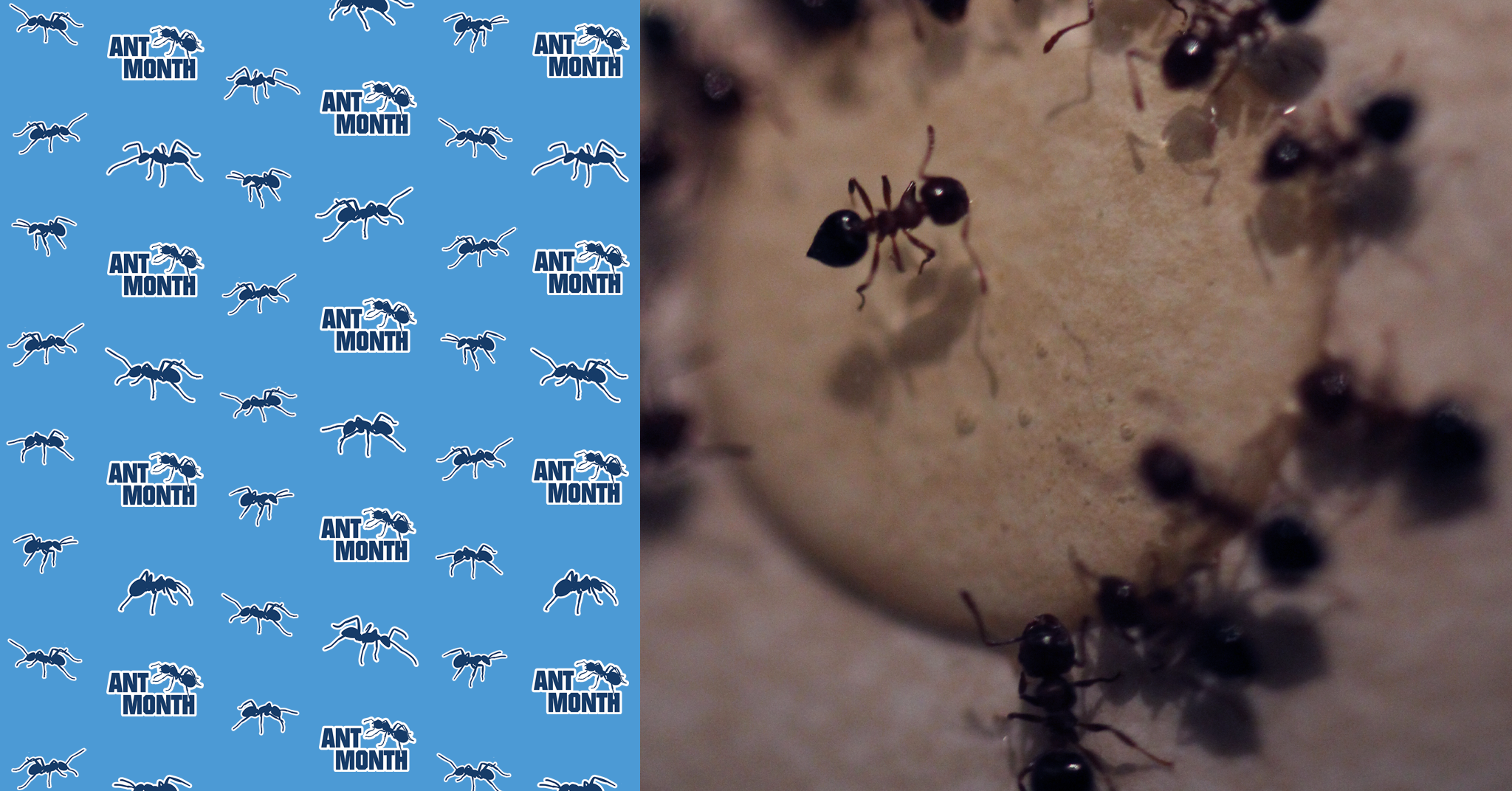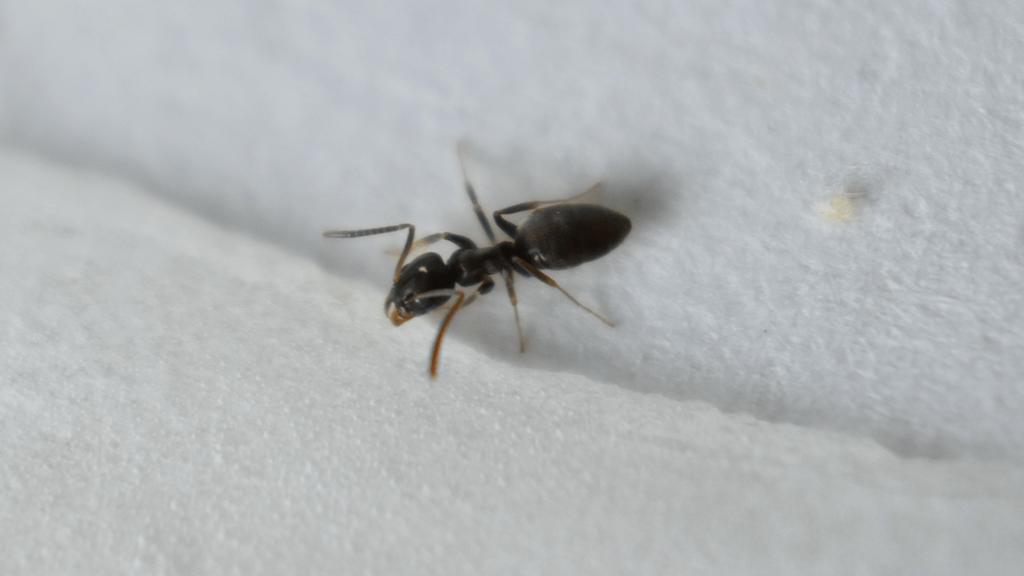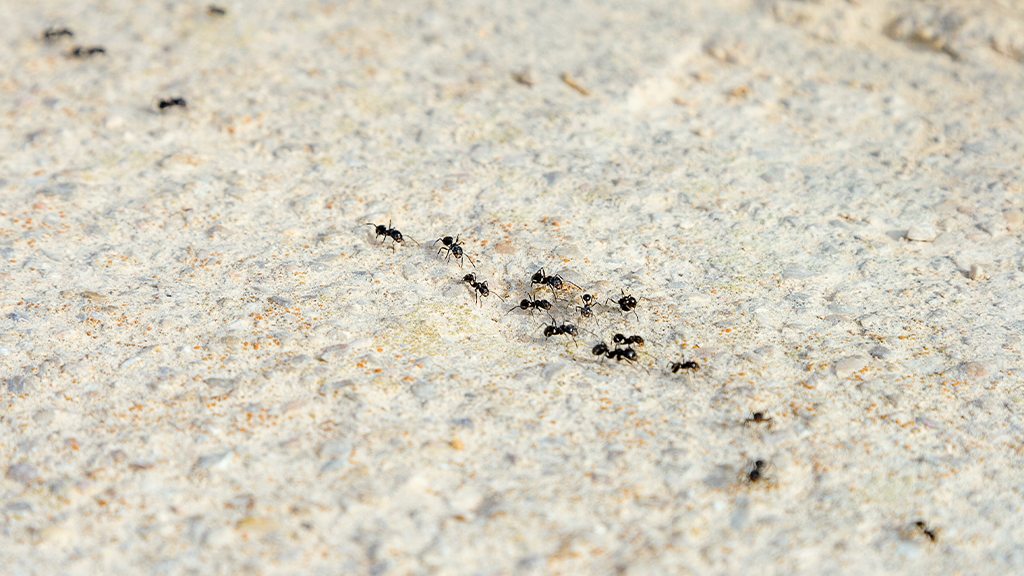ANT MONTH: All About… Odorous House Ants

Tired of tiny ants invading your home, wondering which species is congregating on the floor and how to get rid of them? It’s Ant Month here at Moxie Pest Control with your week-by-week guide to four types of the world’s most common (and annoying) pest.
Ants are a diverse family of insects, and noting key differences between ant species provides important clues for the right plan of attack. Kicking off our series is the odorous house ant, one of those most common six-legged household invaders.
WHAT ARE ODOROUS HOUSE ANTS?
These common household ants go by many names: sugar ants, stink ants, coconut ants, house ants, OHAs, and their scientific name Tapinoma sessile. True to their many monikers, odorous house ants are known for their attraction to sugary spills, their irritating presence in households of all kinds, and for the distinctly rotten odor discharged from their bodies when crushed. Take caution before crushing one of these tiny pests—their unpleasant smell has been compared to rotten coconuts, spoiled butter, strong Pine-sol, and bleu cheese.
WHAT DO THEY LOOK LIKE?
Though they’re most easily identified by their post-mortem odor, odorous house ants are also relatively easy to identify. Take a closer look at a trail of odorous house ants marching toward a sticky spill and you’ll see a line of dark brown workers uniform in size, with ants measuring no larger than ⅛ of an inch (for scale, the average grain of white rice is nearly twice as long). These tiny ants sometimes appear nearly black in color, with a prominent abdomen concealing a single petiole node, six brownish legs, two antennae, and an irregularly shaped thorax. They are smaller than some of their common counterparts such as Argentine and pavement ants.
WHAT DO ODOROUS HOUSE ANTS EAT?
Odorous house ants have adapted to a variety of habitats and can sustain themselves on scraps of grain, meats, dairy products, oils, vegetables, processed foods, and even dead insects. They have an insatiable sweet tooth, however, and will travel impressive distances for sweet compounds like plant nectar or honeydew, a sweet, honey-like substance found on leaves and excreted by plant-loving insects like aphids. The powerful motivation for sweets is likely the reason odorous house ants wandered inside your home to begin with. Fruits, juices, sugar granules, and sweetener-loaded packaged foods are all attractive targets for these ants.
WHERE ARE THESE ANTS COMING FROM?
Odorous house ants have been documented trailing along inside North American homes for nearly 200 years. In the wild, their large colonies live within simple, shallow nests in the soil underneath wood, stones, rocks, and other debris. Their ability to thrive in a variety of conditions means their nests can crop up just about anywhere: in sandy beaches, within garden mulch, under fallen logs and sticks, and even under piles of inorganic materials like plastics or metals. As moisture lovers, these ants will choose a damp nesting site over a dry spot in most cases.
Our homes are prime nesting spots for odorous house ants, too. Their nests can be found within walls, near pipes, around appliances, within cupboards, or hidden beneath baseboards. Indoor nesting sites are attractive for these pests because of the proximity to potential crumbs, spills, and sweet food sources in our kitchens—the less odorous house ant workers have to travel to grab morsels to bring back to the colony, the easier it is for their colonies to thrive. Once worker ants have discovered a food source, they leave a scent trail for others to follow. If you spot a few of these tiny ants trailing in your kitchen, there are likely many others on their way.
HOW DO I GET RID OF ODOROUS HOUSE ANTS?
Odorous house ants rarely bite and don’t have a stinger, but that doesn’t make their presence any less of a nuisance than other types of ants. Colonies can reach numbers in the thousands, which means an increased risk of contaminated food and numerous nesting sites. When ants are already invading your home and garden, a few surefire steps can help to control them.
CLEAN UP: Give these pests less of a reason to hang around by reducing or eliminating attractive food sources. Do a deep cleaning of your space to ensure sweet or sticky messes especially are taken care of, and don’t forget to clean areas hidden from regular view, too. Taking care to wipe up and interfere with the invisible pheromone trails will disrupt worker activity and stop them from marching to and from your pantry.
UPGRADE FOOD STORAGE: It’s tempting to leave cereal in its original packaging, but in order to deter odorous house ant workers, it’s better to use other storage solutions. Airtight containers not only protect your food from contamination, they also keep tempting, ant-luring odors locked inside the container.
USE SWEET BAITS: Place sweet baits designed for sugar-loving ants. Why baits? Because bait pesticides offer a long-term solution for eliminating ant colonies, but the process can require some patience. In fact, baits may take several rounds and a few weeks to see a significant change, so a bit of diligence here goes a long way. And keep in mind that products vary, so be sure to read and follow the bait label’s instructions about where and how to best set your specific products.
SEAL THEM OUT: Odorous house ants aren’t just sneaking in through opened windows and doors; they’re crawling in through gaps or cracks out of sight and mind as well. These tiny ants don’t need a large hole to get through, and even small cracks can be their gateway into your pantry. Take an afternoon to replace worn out weather stripping, close up cracks and gaps with caulking or sealant, and make any repairs to potential entry spots.
BRING IN THE EXPERTS: Ants are notoriously tricky to control, so a call to the professionals could save a lot of time and energy. Professional pest control experts are trained to identify ants, locate nests, and properly apply treatments to adequately control ant infestations you already have, as well as take steps to prevent future infestations from happening, too.

Once ants are in your home, they won’t leave on their own. Check back for more information on common ant species during our Ant Month series to get a jump on DIY ant control. If you suspect an infestation by one of these ant culprits and want to get one of our pest control professionals out to inspect your home, just give us a call.





